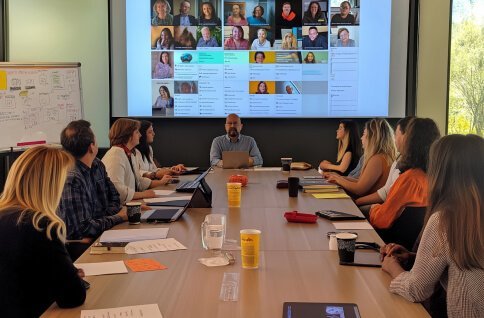As digital interfaces continue to evolve, 2025 is shaping up to be a pivotal year in UI/UX design. No longer focused purely on visual appeal, user experience now demands a deep understanding of personalization, emerging technologies, and ethical considerations. With users expecting smarter, faster, and more intuitive experiences, staying on top of UI/UX trends is essential for any brand or digital product team.
Hyper-Personalization with AI
Artificial Intelligence is enabling a new wave of highly personalized user interfaces. Instead of static layouts, digital experiences are now adapting in real time to each user’s behavior, preferences, and even emotional state. From dynamic content to rearranged navigation flows based on individual usage patterns, personalization in 2025 will feel more human, intuitive, and context-aware. This trend enhances not only usability but also emotional connection between the brand and the user.
Voice and Conversational Interfaces
With the rise of voice assistants and hands-free technology, voice interfaces are no longer optional—they’re expected. Voice-first design means crafting interactions that are efficient, natural, and accessible without relying on visual cues. Paired with conversational UI, such as chatbots or AI companions, this trend helps brands offer support, guide decisions, and complete tasks faster. Designers are now prioritizing natural language processing, conversational flow, and seamless handoffs between voice and visual UI.
Immersive Micro-Interactions
Micro-interactions—those tiny animations or feedback loops when a user clicks, hovers, or swipes—have grown far beyond their subtle beginnings. In 2025, micro-interactions are immersive and expressive. Think haptic feedback, smooth gestures, and real-time responses that make digital environments feel tactile. Whether it’s a bounce effect when sending a message or a ripple animation after a button press, these enhancements make interfaces more engaging and intuitive.
Adaptive and Context-Aware Design
Designing for context is a defining trait of the modern UX approach. Users are on different devices, in various environments, and under changing conditions throughout the day. Interfaces that adapt—such as light/dark themes that respond to ambient light, content that adjusts based on location, or UI that becomes more accessible based on input data—are becoming essential. Instead of one-size-fits-all layouts, design in 2025 responds to real-time needs and circumstances.
Evolved Visual Aesthetics: Neumorphism 2.0
Visually, 2025 is moving beyond both extreme flat design and excessive realism. The new aesthetic balance—sometimes called Neumorphism 2.0—blends subtle shadows, depth, translucency, and minimalism. This approach creates interfaces that feel soft, elegant, and functional without being visually overwhelming. Designers are incorporating gradients, blurred glass elements, and layered effects to add realism and depth, while still prioritizing clarity and accessibility.
Ethical and Sustainable Design
Today’s users are more conscious of how digital design affects their time, behavior, and mental health. In 2025, ethical design is not just a bonus—it’s a responsibility. That means avoiding manipulative dark patterns, reducing notification fatigue, and designing features that respect user focus and well-being. Sustainable UI/UX also includes optimizing code and assets for lower energy usage, especially as more people become aware of the environmental impact of digital consumption.
Augmented Reality (AR) and Spatial Design
The adoption of AR is transforming user experience design. In 2025, more interfaces will exist in physical space—overlaid through smart glasses, mobile AR, or other wearable devices. This trend calls for entirely new approaches to layout, interaction, and feedback. Spatial design will become a standard practice, requiring UI/UX designers to think in 3D, build intuitive navigation in physical environments, and create interactive overlays that enhance real-world tasks.
Accessibility-First Design Thinking
Accessibility has evolved from a compliance requirement to a creative advantage. Inclusive design principles are now embedded in the earliest stages of UX strategy. This means flexible typography, voice control, high-contrast modes, scalable interfaces, and gesture-based navigation are being prioritized—not retrofitted. The result is digital experiences that work better for everyone, regardless of ability or device.
Conclusion
UI/UX design in 2025 is smarter, more ethical, and deeply human-centric. It’s not just about how things look, but how they work—adapting to the user, respecting their context, and delivering value through elegant simplicity. As digital experiences continue to intertwine with everyday life, these trends are helping shape a future where technology is not just useful, but meaningful.







